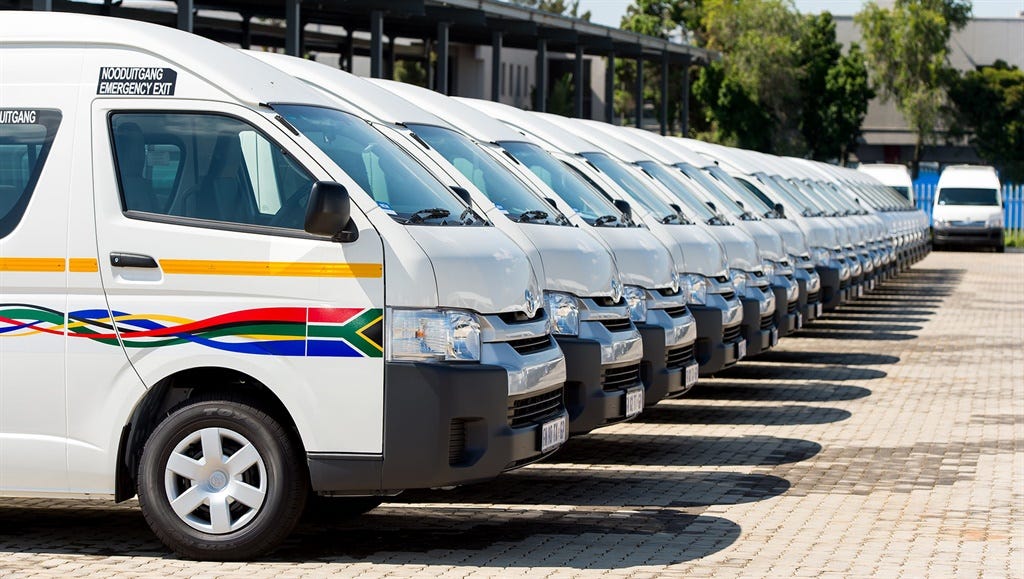Best of Johannesburg
Taxi Rules 2025: What South African Passengers Really Need to Know

A year of change, your ride will never feel the same
In 2025, South Africa is shifting gears in how we move. The long-awaited National Land Transport Amendment Act now formally recognises ride-hailing (e-hailing) services under public transport law. At the same time, stricter oversight is being imposed on the minibus taxi sector. These reforms don’t just rewrite the rules; they change your rights as a passenger.
E-hailing: from grey market to regulated route
No more “maybe legal, maybe not” when you book a ride. As of 12 September 2025, e-hailing services are officially governed under the amended National Land Transport Act.
Now, every e-hailing driver must hold a dedicated operating licence, replacing older charter or metered permits. Vehicles must display clear branding so passengers can spot a legitimate operator. Panic buttons, physical in-vehicle emergency buttons, are mandatory in every ride-hail vehicle.
Drivers also face tougher vetting: background checks, valid Professional Driving Permits, and accurate, up-to-date app profiles are required. The licence also defines the geographic area in which the driver may pick up passengers, so if your ride diverts out of that zone, you’re allowed to question it.
Breach the rules, and the penalties bite: fines up to R100,000 or up to two years in jail for noncompliant drivers or platforms. The regulatory authorities have the power to suspend or cancel licences.
E-hailing platforms must also register with regulators and ensure they don’t allow unlicensed operators to use their apps.
Minibus taxis: tightening the loose edges
The traditional taxi sector hasn’t escaped reform. In 2025, the government is pushing to formalise and stabilise this vital but contentious mode of transport:
-
Biannual vehicle inspections are becoming stricter, and illegally converted vans are actively being impounded.
-
New digital licensing systems and biometric checks are being rolled out to bring more accountability.
-
The allocation of taxi routes, long controlled by powerful associations, is being shifted toward municipal or provincial transport boards to mitigate conflict and favour transparency.
-
Taxi associations themselves are being given stronger enforcement powers to impound noncompliant vehicles and issue stiffer penalties for reckless, unprofessional behaviour.
These changes aim to reduce danger, limit unlawful practices like rogue roadblocks, and bring greater consistency to your daily commute.
What’s not changing: myths busted
Despite viral social media claims, no law in 2025 requires private car owners to stop driving or restricts how many people you can carry in your own vehicle.
Rumours that taxi groups can demand you only carry one passenger in your car are unfounded. These narratives appear to be fear tactics or misinformation. The reforms focus exclusively on public transport; the goal is to regulate operators, not police ordinary drivers.
What you need to do as a passenger
You’re not just a background figure in this overhaul; your awareness matters:
-
Always check that the driver and vehicle details in your ride-hailing app match the car you see.
-
Look for the company branding on the exterior.
-
If in the vehicle you feel unsafe, ask to use the panic button.
-
Stay seated and keep your belongings secure.
-
If you spot an unroadworthy taxi or an aggressive driver, report them to the authorities or the taxi association.
-
Don’t tolerate unlawful roadblocks. Taxi associations do not have the legal power to stop private cars and demand money; report these to SAPS.
These are your rights and tools in the new system.
Between the lines: tension, hope, and risk
Implementing these reforms won’t be smooth. Delays in permit issuance, notably in Gauteng, have already sparked frustration among drivers. Some fear the cost and bureaucracy will push smaller operators out of business. Meanwhile, taxi associations may abuse enforcement power if left unchecked.
Yet at its heart, this is a pivotal moment: e-hailing and minibus taxis have long operated in opposition, sometimes violently. This new framework attempts to build a truce, or at least a shared rulebook. For commuters, that could mean fewer surprises, safer journeys, and more predictable service.
But to make that real, you’ll need to stay alert, demand compliance, and refuse rides that don’t check out. The rules have changed; now it’s time for the roads to catch up.
Also read: Expired Driver’s Licence in South Africa 2025: Fines, Grace Period, and Your Rights
Follow Joburg ETC on Facebook, Twitter, TikT
For more News in Johannesburg, visit joburgetc.com
Featured Image: Medium



























